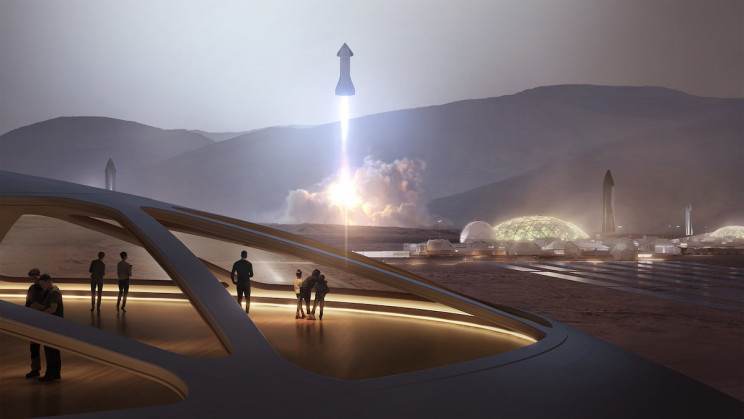NASA Space Technology
The radiation dose for the 2.5 year round trip between Earth and Mars should give approximately a 1% lifetime increase of a fatal cancer.
SpaceX Starship will totally change the situation on payload and travel times. The Starship will be refueled in Earth Orbit. All NASA missions to Mars have launched with multiple stages get to orbit and then to go to Mars. This means the final stage that goes to Mars has to go smaller and slower. They are about 20 times smaller than the launch rocket and they go about 2-3 times slower than a fully fueled in orbit Starship.
Starship could travel to Mars one-way in 70-90 days without extra exceptional effort beyond refueling in orbit. This is better than the 180-270 days of other vehicles. Reduced travel time would already halve or quarter the amount of radiation exposure. It would also reduce the time window when crews could be exposed to increased solar storms.



7.15 centimeters of water halves the gamma rays (500 kev or less). 71.5 centimeters of water would reduce gamma rays by 1000 times. 143 centimeters would reduce gamma rays by 1 million times. Water shielding would not be needed for the entire interior volume of Starship. It would be useful for the main sleeping, eating and living areas inside the Starship. A six-sided cube with 4 meters per side would have 96 square meter sections. If those were 71.5 centimeters thick and some tank walls, then 80 tons of material would provide 0.1% of the radiation exposure in a volume of about 64 cubic meters.
The average radiation on Earth is very low at ~6.2 milliSieverts per year (mSv per year). However, in some areas of the city Ramsar, Iran, the radiation level is 260 mSv / year, with no increase in health problems. Thus the radiation safety levels in many countries on Earth, are likely too conservative. This is good news for Mars colonists. The goal is not 6.2 mSv per year, but say 200 to 250 mSv / year.
41 times the average radiation has been proven to be safe. Passive radiation shielding is measured in thickness of material to halve the radiation level. Five levels of radition halving will not actually be necessary.
Also note that sudden radiation doses are much more dangerous than a small steady dose over a long period of time. A solar storm is FAR more dangerous than the slow and steady trickle of cosmic rays.
Long term settlers will need to shield against 3 types of radiation: Electromagnetic radiation, Solar Cosmic Rays, and more powerful Cosmic Rays. Of the last, Galactic Cosmic Rays are by far the most common fraction of these.
Here is a link to the Marspedia information on Radiation shielding.



Brian Wang is a Futurist Thought Leader and a popular Science blogger with 1 million readers per month. His blog Nextbigfuture.com is ranked #1 Science News Blog. It covers many disruptive technology and trends including Space, Robotics, Artificial Intelligence, Medicine, Anti-aging Biotechnology, and Nanotechnology.
Known for identifying cutting edge technologies, he is currently a Co-Founder of a startup and fundraiser for high potential early-stage companies. He is the Head of Research for Allocations for deep technology investments and an Angel Investor at Space Angels.
A frequent speaker at corporations, he has been a TEDx speaker, a Singularity University speaker and guest at numerous interviews for radio and podcasts. He is open to public speaking and advising engagements.








